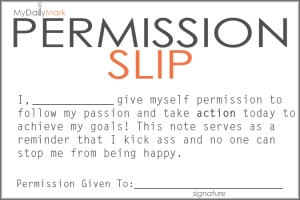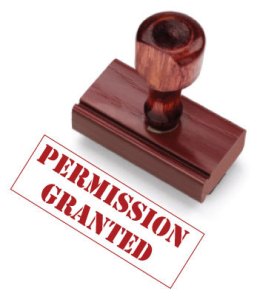 Photo by Andrik Langfield on Unsplash
Photo by Andrik Langfield on Unsplash
When I first established a writing blog, the intention was to offer commentary on the journey of being a writer. After a lifetime of doing everything but writing, I felt my path was clear, especially after the wonderful experience of securing an MFA in fiction. It wasn’t that I needed a degree in order to write, but the entrance to that creative community meant everything.
Emboldened by the confidence in my understanding of craft, and two completed manuscripts waiting to be revealed, I continued writing blog entries and working on four other novels. I blamed my lack of writing from birth to age sixty on the notion that life gets in the way. It can and it does, but I thought I’d garnered the tools to succeed going forward.
I was wrong. I underestimated what I was up against.
Just when I thought I’d secured a lock on life and had set my feet on the path; LIFE reappeared, wagging its bony finger and whispering: “Au contraire.”
May is mental health month, so it seems fitting to pen something about the subject from within the community of writers – as a representative of the larger community of artists. Yes, it’s cathartic, but it might also serve as a warning label that by proceeding, it’s fair to expect some level of anguish in your future or possibly as a reminder you’re not alone in the quagmire. It should never mean the path is to be avoided, but each of us must find a way to use our mental state to an advantage – as J.K. Rowling created Dementors as a metaphor for the depression she suffered. It’s easier said than done, but that’s why she’s J.K. Rowling.
It shouldn’t come as a surprise that, as a percentage, creative people are more prone to mental health issues than the general population. I personally believe it stems from an enhanced sense of empathy and a greater sensitivity to worldly conditions. Everyone has major problems in life. For me, it was a succession that consisted of the collapse of my career and financial world following the sub-prime mortgage crisis, mounting debt, a personal bankruptcy, losing my home, being hauled in front of the NYC District Attorney’s office to give information about a former employer, the draconian measures of the New York State Income Tax Department, the IRS, having to rely on supplemental food programs, and working to rebuild a world decimated by faulty choices and horrific karma. When prone to depression in the first place, that kind of life mimics the torture endured by Theon Greyjoy at the hands of Ramsay Bolton. Through it all, I’ve tried to write.
But, perseverance comes at a price.
A writer strives to overcome life’s obstacles while they write, query, read, edit, and write some more. Precious few are fortunate to garner a book deal, land an agent, or find some modicum of success through self-publishing. Perseverance though is risky, because weighed against all other complications, creativity is the one thing that stems from passion, the essence of the creative mind, which makes all else, can I say tolerable? The inherent risk of such doggedness is the possibility that self-perceived failure in your creativity spreads like poison, and at the very worst – as has happened to me – results in the death of passion. It’s as if passion is the muscle, the source of strength, used to keep pace, but endurance is not limitless. When the moment you recognize that loss arrives, it destroys all vestiges of one’s sense of purpose; depression metastasizes like an unchecked cancer. I say this because every artist who ever lived has faced that moment when they consider their creations worthless. You’re left feeling directionless and without the will to bother getting out of bed.
In the past three years, I’ve read only two books – even though I worked quite a while in a book store to make ends meet. I struggled to complete a third novel as the sequel to one I had published, but it was by rote. I felt like a car rolling slowly to a stop after running out of gas. I mourn the loss of those moments when my brain would visualize, with startling clarity, the nuances of a story idea, the exchange of good character dialogue, the satisfying connection of one plot point to the next. I still yearn to tell stories; much like a body tries to breathe. My greatest hope is that my sense of passion returns someday, a well-rested muscle ready and able to create new work. At the moment, it seems hopeless – a major side-effect of depression. The cycle is perpetual and ultimately diminishing.
I’ve read many articles that appeal to writers about never giving up, about finding the method that works best to succeed, to write even a little every day. There’s NaNoWriMo to encourage everyone who aspires to communicate by the written word to sit down and do it. These are all valuable and inspiring, but every once in a while, a reminder is necessary of what the dark side has in store. Mental health issues, especially depression, are a common disease amongst us, and you need to understand it will lurk in the recesses of your genes, ready to blossom at an unsuspecting moment. Forewarned is forearmed, and being forearmed is to put a support system in place.
I cannot stress in strong enough terms the requirement to seek out people who can appreciate the subtle differences between those with creativity at their core with those who aren’t. People with no exposure to the ways of the artistic mind are likely to brand one who is as introverted, weird, stand-offish, even snobbish. We’re difficult to put up with; we’re nearly impossible to endure on a daily basis. I’m fortunate to have a significant other who gets it, and I experience unrelenting guilt over the fact she does endure it. The argument could be made that I might have stopped drawing breath but for her. Help is mandatory, as expressed in all warnings about depression and suicide awareness campaigns. It doesn’t have to come in the form of a wife, or husband, or partner – it can come from connecting with others in our community, but the support system must exist in some way.
Protect your passion, for us it’s our life-blood. If you’re new to this, be prepared. If you suffer like I do, remember you’re not alone.











